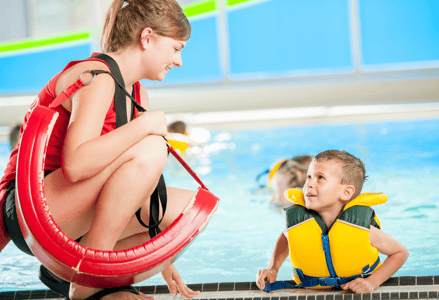
Our previous “Real World Examples” post focused on Regard for Student Perspectives. As we continue our journey through CLASS® interactions, we will move into our next domain, Classroom Organization. We will begin with the dimension of Behavior Management. This dimension focuses on how educators help children learn to regulate their behavior and emotions by setting clear, consistent, and realistic behavioral expectations.
Through the CLASS lens, educators who score high in Behavior Management create a predictable environment where children understand what is expected of them and are effectively supported in meeting those expectations. This approach sets children up for success by reinforcing positive behaviors and providing guidance during challenging moments. Anticipating and addressing potential misbehavior is vital in fostering a well-managed learning environment where children can continue their development of self-regulation skills.
As we explore real-world examples of Behavior Management strategies in action, let’s imagine how this dimension might play out at a community swimming pool.
Behavior Expectations (Clear Behavior Expectations)
You walk into the pool center and immediately see the sign with the rules clearly stated:
-
Use plastic containers only.
-
Eat at tables only.
-
Walk at all times.
-
Children must be accompanied by an adult.
Reading this sign makes you feel more comfortable at the pool, reassuring you that the right rules are in place to keep everyone safe. You appreciate being told what you can do, not just what you cannot, which helps you manage your behavior and meet expectations. As you apply sunscreen, you hear the lifeguard remind swimmers, "Remember to walk so you stay safe!". Knowing the lifeguards are actively watching and clearly explaining the rules gives you confidence that safety is a priority. You're sure you and everyone else will have a safe experience at this well-managed pool.
Proactive
You notice the lifeguards on duty constantly monitoring the water and the area around the pool to ensure everyone’s safety, especially keeping a close eye on the busy diving board. Recognizing this as a popular spot for children, many of whom are excited and restless as they wait, you observe a lifeguard walk up to the children. He reminds them to stand on the yellow circle spots, organizing them into a safe line. You appreciate how the lifeguards stay one step ahead of potential misbehavior by proactively guiding the children and using the yellow spots to help the children wait in line safely.
Redirection of Behavior (Redirection of Misbehavior)
As children jump off the diving board, some eagerly rush to get back in line for another turn. One child starts to run, and a lifeguard quickly blows his whistle, saying, "Please walk! I don’t want you to fall." Hearing this, another child walks back to the line, and a second guard approaches with a smile, saying, "Thank you for walking! You're being safe—high five!" You appreciate how the lifeguards word it positively by telling the children what they can and should do rather than only focusing on behavior that needs to stop. You also notice subtle yet effective redirections, like when the lifeguards move closer to children who are arguing or point to the tables when they spot a child eating near the pool, as gentle ways to guide positive behavior.
Child Behavior (Student Behavior)
Looking around, you see the pool full of excited children having fun while staying safe. Most kids remember to walk and wait on the yellow spots for their turn at the diving board. Families are gathered at tables, using plastic containers, which doesn’t surprise you—thanks to the lifeguards’ consistent explanations and enforcement of the rules. It's clear that everyone knows how to stay safe and what’s expected of them. When challenges arise, they’re handled quickly, and children are gently guided back to positive behavior. Overall, you’re impressed with how well the pool creates a safe, enjoyable environment for everyone.
By having proactive Behavior Management strategies in place at the community pool, children are able to engage in social play, develop their gross motor skills, and spend quality time with their friends and family in a safe and engaging learning environment!
What are some of your favorite real-world examples of Behavior Management? Do you ever think about Behavior Management when navigating situations in the adult world? What have you learned from your experiences that can be applied to how you support children in the learning setting?

